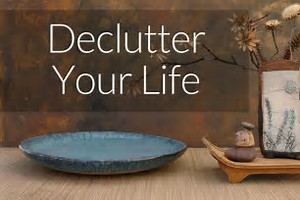
When real estate pros talk to clients about decluttering their homes, they might not realize what they’re getting into. In fact, getting rid of stuff can be painful, even for those who aren’t hoarders or recent widows. It’s the normal, everyday resistance to purging our belongings that attracts Christy Diane Farr to the world of self-help writing and life coaching.
In Is Home Your Happy Place: The Unruly Woman’s Approach to Space Healing (Paper Angel Press), Farr explains that society reinforces the idea that hanging onto stuff is normal, and that she wants to help otherwise healthy people downsize in a balanced way. “The whole off-site storage industry popped up to reinforce that it’s not just normal but often necessary to possess more than our space will hold,” she writes. “I’m more of a normative chaos kind of guide, if there is such a thing. I want to work with people whose lives are stuck; people who are reasonably functional but who are not living the dream.”
Early in the book, Farr identifies six types of things that people hold onto that stand in the way of living that dream. I think this list is especially helpful for Book Scan readers because if real estate pros can understand the reasons behind why their clients are holding onto stuff, it might help them more skillfully ease through this transition. And if nothing else, you might consider lending them Farr’s book, which is filled with funny asides and assignments created to help people “release” the stuff that’s holding them back.
1. Stuff that makes you feel crazy. Farr uses the example of food storage containers, which I find maddeningly familiar (who hasn’t yelled exasperatedly at the cupboard containing the tupperware at least once in their life?). She encourages readers to balance the functionality of any given item with the space that’s claimed by it. “The madness of trying to manage them far outweighs anything even remotely resembling the convenience that would be using them.”
2. Stuff that’s broken. I’m totally guilty of keeping things around with the intention of repair, but without actually doing anything about it. “If you’re not going to fix it, let it go. It’s either worth the time, money, and energy it takes to make it work, or it just isn’t. Free it, and free yourself.”
3. Stuff that makes you hang onto an unpleasant past. Farr deals with this a lot throughout the book, because she clearly recognizes the pain that comes with decluttering. “The stuff is locked into the feelings and the feelings are locked into the stuff. It doesn’t matter from which side we break the lock. What matters is that we break it,” she writes. “It works because dealing with our clutter is simply a willingness to, at long last, deal with ourselves.”
4. Stuff that’s expired. Here Farr is talking both about old food and meds, but also stuff that has a less obvious expiration date. “The idea behind the expiration date challenge can be applied to all aspects of your life. Since my kids are going to college soon, my maternity clothes are expired. Books I’ve read and have no intention of reading again are expired,” she writes. “If our relationship with this stuff was intended to be eternal, caskets would be bigger. Once something expires, we can let it go.”
5. Stuff that sucks. I love this one! Farr mentions as examples cleaning products that don’t work as they say they will and clothes that don’t look good on. “Ultimately, the goal here is to own only those things that we use or truly love. We want to be surrounded by things that feel good to us.”
6. Stuff that used to be a good idea. This one is especially pertinent for the crafters out there. I like Farr’s challenge to gather all the supplies for projects left undone, and force the issue: “I put them all in this box and labeled it with an expiration date one month from today. This will keep the ‘I meant to…,’ from going on forever. Otherwise, it will. I know this because I’ve met me before. If I want a different outcome, I’ve got to do something different.”
article by: Meg White, managing editor for REALTOR® Magazine
Share My QR |
|
Success!
